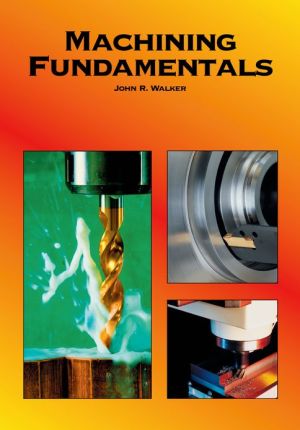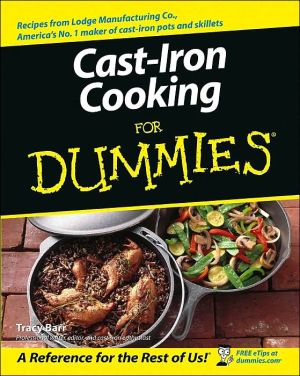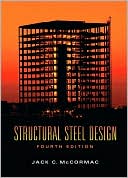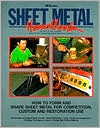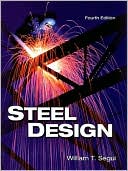Machining Fundamentals: From Basic to Advanced Techniques
Machining Fundamentals is a comprehensive text that provides an introduction to the various machining operations, setups, and procedures. The colorful and detailed text covers all traditional machining methods, as well as newer and nontraditional methods. Extensive coverage of CNC and automated manufacturing processes is included.\ \ \ Provides information for machining and shaping techniques required to work currently used metals and alloys.\
Search in google:
Machining Fundamentals is a comprehensive text that provides an introduction to the various machining operations, setups, and procedures. The extensively revised text details all traditional machining methods, as well as newer and nontraditional methods. Extensive coverage of CNC and automated manufacturing processes is included. Booknews An introduction to this important area of manufacturing technology, explaining various machining operations, set-ups, and procedures. Advantages and disadvantages of various machining techniques are discussed, along with their suitability for particular applications. Details common methods of machining and shaping parts to meet given specifications, and also covers newer processes such as laser machining and robotics. Computer numerical control in operation of most machine tools, and its role in automated manufacturing, is explored. Includes objectives, quizes, and color photos and diagrams. Annotation c. Book News, Inc., Portland, OR (booknews.com)
Chapter 1. An Introduction to Machining .... 111.1 Technology 1.2 The Evolution of Machine Tools .... 12 1.3 Basic Machine Tool Operation .... 14 1.4 Nontraditional Machining Processes .... 17 1.5 Automating the Machining Process .... 17 1.6 The Evolving Role of the Machinist .... 20 Chapter 2. Shop Safety .... 23 2.1 Safety in the Shop .... 23 2.2 General Machine Safety .... 26 2.3 General Tool Safety .... 27 2.4 Fire Safety .... 27 Chapter 3. Understanding Drawings .... 29 3.1 Dimensions .... 31 3.2 Information Included on Drawings .... 32 3.3 Types of Prints .... 37 3.4 Types of Drawings Used in the Shop .... 38 3.5 Parts List .... 38 3.6 Drawing Sizes ...38 3.7 Geometric Dimensioning and Tolerancing .... 41 Chapter 4. Measurement .... 55 4.1 The Rule .... 55 4.2 The Micrometer Caliper .... 57 4.3 Vernier Measuring Tools .... 63 4.4 Gages .... 67 4.5 Dial Indicators .... 70 4.6 Other Gaging Tools .... 71 4.7 Helper Measuring Tools .... 75 Chapter 5. Layout Work .... 81 5.1 Making Lines on Metal .... 81 5.2 Squares .... 85 5.3 Measuring Angles .... 85 5.4 Simple Layout Steps .... 87 5.5 Layout Safety .... 89 Chapter 6. Hand Tools .... 91 6.1 Clamping Devices .... 91 6.2 Pliers .... 92 6.3 Wrenches .... 95 6.4 Screwdrivers .... 99 6.5 Striking Tools .... 101 6.6 Chisels .... 102 6.7 Hacksaw .... 104 6.8 Files .... 107 6.9 Reamers .... 112 6.10 Hand Threading .... 114 6.11 Hand Polishing .... 122 Chapter 7. Fasteners .... 127 7.1 Threaded Fasteners .... 127 7.2 Nonthreaded Fastening Devices .... 135 7.3 Adhesives .... 138 7.4 Fastener Safety .... 140 Chapter 8. Jigs and Fixtures .... 143 8.1 Jigs .... 143 8.2 Fixtures .... 145 8.3 Jig and Fixture Construction .... 46 Chapter 9. Cutting Fluids .... 149 9.1 Types of Cutting Fluids .... 149 9.2 Application of Cutting Fluids .... 150 Chapter 10. Drills and Drilling Machines .... 153 10.1 Drilling Machines .... 153 10.2 Drill Press Safety .... 157 10.3 Drills .... 158 10.4 Drill-holding Devices .... 163 10.5 Work-holding Devices .... 164 10.6 Cutting Speeds and Feeds .... 167 10.7 Cutting Compounds .... 168 10.8 Sharpening Drills 170 10.9 Drilling .... 173 10.10 Countersinking .... 176 10.11 Counterboring .... 177 10.12 Spotfacing .... 178 10.13 Tapping ..... 178 10.14 Reamingt .... 180 Chapter 11. Offhand Grinding
\ BooknewsAn introduction to this important area of manufacturing technology, explaining various machining operations, set-ups, and procedures. Advantages and disadvantages of various machining techniques are discussed, along with their suitability for particular applications. Details common methods of machining and shaping parts to meet given specifications, and also covers newer processes such as laser machining and robotics. Computer numerical control in operation of most machine tools, and its role in automated manufacturing, is explored. Includes objectives, quizes, and color photos and diagrams. Annotation c. Book News, Inc., Portland, OR (booknews.com)\ \
